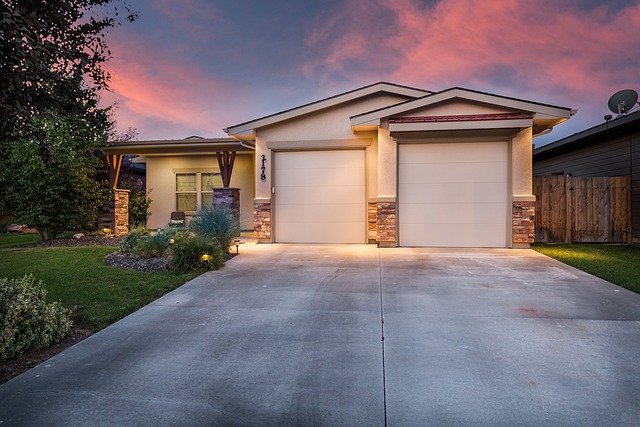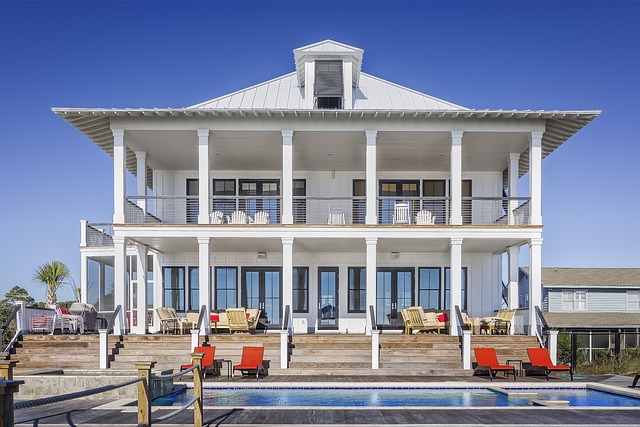When considering the purchase or ownership of a unit in the Balance Executive Condominium (EC) at Tampines, it's crucial to understand the maintenance fee structure, which covers the upkeep of shared amenities, facilities management, and administrative tasks. These fees are mandatory and can fluctuate due to changes by the managing agent or strata titles board. Maintenance costs encompass routine care for communal spaces like pools and elevators, facility enhancements, security services, and contributions to a sinking fund for future repairs. Owners should carefully review their annual maintenance and management fees statement to manage their budget effectively. The condition of the common property, unit size and type, and community decisions on services influence these fees, with older or larger units typically incurring higher costs. Factors such as age-related wear and tear, unforeseen events like natural disasters, and changes in local regulations and economic conditions can lead to fee adjustments. To maintain the Balance EC's value and ensure financial stability, residents must stay informed and proactive about maintenance fee expectations, planning for long-term sustainability by establishing a sinking fund and considering historical data and projected budgets. Engaging with management and the residents' committee will provide essential information to keep the Balance Executive Condo well-maintained and in optimal condition for its residents.
Balancing the ledger of Executive Condominium (EC) maintenance fees is a critical aspect of ownership. This article demystifies the rationale, outlines the costs involved, and offers strategies to manage these expenses over time. From comprehending the necessary upkeep to forecasting future financial obligations, readers will gain insights into the factors influencing EC maintenance fee variations and how to effectively budget for them. Join us as we navigate the complexities of maintaining the value and quality of your Executive Condo investment.
- Understanding the Rationale Behind EC Maintenance Fees
- Breakdown of EC Maintenance Costs: What Owners Should Expect
- Factors Influencing the Variation in Balance at Executive Condo Maintenance Fees
- Strategies for Managing and Budgeting for EC Maintenance Fees Over Time
Understanding the Rationale Behind EC Maintenance Fees

Breakdown of EC Maintenance Costs: What Owners Should Expect

When considering the purchase or ownership of an Executive Condominium (EC) in Singapore, understanding the EC maintenance fees and associated costs is crucial for long-term financial planning. Owners of ECs are required to contribute to the maintenance fees which cover the upkeep of common areas, facilities management, and the overall administration of the property. These fees are typically collected monthly and are subject to adjustments by the managing agent or the strata titles board.
The breakdown of EC maintenance costs encompasses various components. Firstly, the cost for regular maintenance and repairs of shared facilities like swimming pools, lifts, and landscaped areas is a significant part of these fees. Additionally, owners should anticipate expenses related to the enhancement of facilities and security services to ensure the safety and well-being of residents. Other potential costs include the sinking fund contributions, which are set aside for larger repairs or renovations that arise over time. The balance executive condo fee, specifically, is designed to maintain a reserve sufficient to cover unforeseen expenses without imposing an undue financial burden on the unit owners. It’s advisable for owners to review their EC’s annual maintenance and management fees statement for clarity on these costs, and to budget accordingly to avoid any unwelcome surprises. Understanding the intricacies of these maintenance fees is essential for prospective and current EC owners alike, as it plays a pivotal role in the overall living experience and property value.
Factors Influencing the Variation in Balance at Executive Condo Maintenance Fees

The balance within Executive Condominium (EC) maintenance fees can fluctuate due to a variety of factors, each contributing uniquely to the overall costs borne by unit owners. Primary among these is the age of the EC; older properties may face higher maintenance fees as they require more frequent repairs and renovations to keep up with current standards. Additionally, the size and type of units, as well as their amenities, play a significant role in determining maintenance costs. Larger or more luxurious units, which often come with additional features such as gyms, swimming pools, and landscaped gardens, tend to have higher fees to maintain these facilities. The condition of common property areas also impacts fees; properties with well-maintained grounds and facilities will generally have lower costs compared to those where upkeep has been neglected.
Another critical factor influencing the balance at EC maintenance fees is the collective spending decisions made by the residents’ committee or managing agent. The frequency and cost of professional services, from security patrols to pest control and cleaning services, can vary significantly based on the collective preferences and priorities of the community. Furthermore, unforeseen events such as natural disasters or emergency repairs can lead to sudden spikes in maintenance fees. Lastly, changes in local regulations and inflation rates also affect the balance, as increased costs for labor and materials are often passed on to the residents. It is imperative for EC residents to stay informed about these factors to manage their financial expectations and plan accordingly for their balance in Executive Condo maintenance fees.
Strategies for Managing and Budgeting for EC Maintenance Fees Over Time

When planning for the long-term sustainability of your Balance at Tampines Executive Condo (EC), managing and budgeting for maintenance fees are critical components. These fees, which cover the upkeep of communal facilities and the overall structural integrity of the building, are an inevitable part of EC ownership. To effectively manage these costs, it’s advisable to set aside funds in a sinking fund, which can be used to offset future maintenance expenses. This proactive approach ensures that you have a financial cushion to cover unexpected repairs or planned upgrades without straining your personal budget. It’s prudent to review the EC’s maintenance fee history and budget projections to anticipate potential increases over time, as these fees can fluctuate based on various factors such as inflation, changes in management policies, and the collective decisions made by the residents’ committee. By analyzing past trends and planning for future expenditures, unit owners can better prepare for these costs and avoid financial surprises.
Budgeting for EC maintenance fees should be a dynamic process that adapts to changing circumstances. Owners should regularly review their financial statements and adjust their contributions to the sinking fund accordingly. Additionally, staying informed about the EC’s financial health through annual accounts can provide insights into potential fee adjustments. Engaging with your EC’s management and residents’ committee can also offer valuable information on upcoming maintenance plans, allowing you to make informed decisions about your personal finances. By combining careful planning, regular reviews of your financial allocations, and staying engaged with your EC community, you can effectively manage and budget for maintenance fees over time, ensuring that Balance at Tampines remains a well-maintained and pleasant place to live for years to come.
When considering the essential role of Executive Condominium (EC) maintenance fees in safeguarding your property’s value and communal amenities, it’s clear that understanding the rationale, managing costs effectively, and anticipating variations in balance are key for EC owners. This article has broken down the components of EC maintenance fees, highlighting what owners should expect in terms of expenses and the factors influencing these costs. By employing strategic budgeting and forecasting, as detailed in the final section, residents can ensure their financial preparedness over time. Balancing the needs of your home with fiscal responsibility is paramount, and this guidance will help maintain the integrity of your investment in an Executive Condo while minimizing unexpected expenditures.
